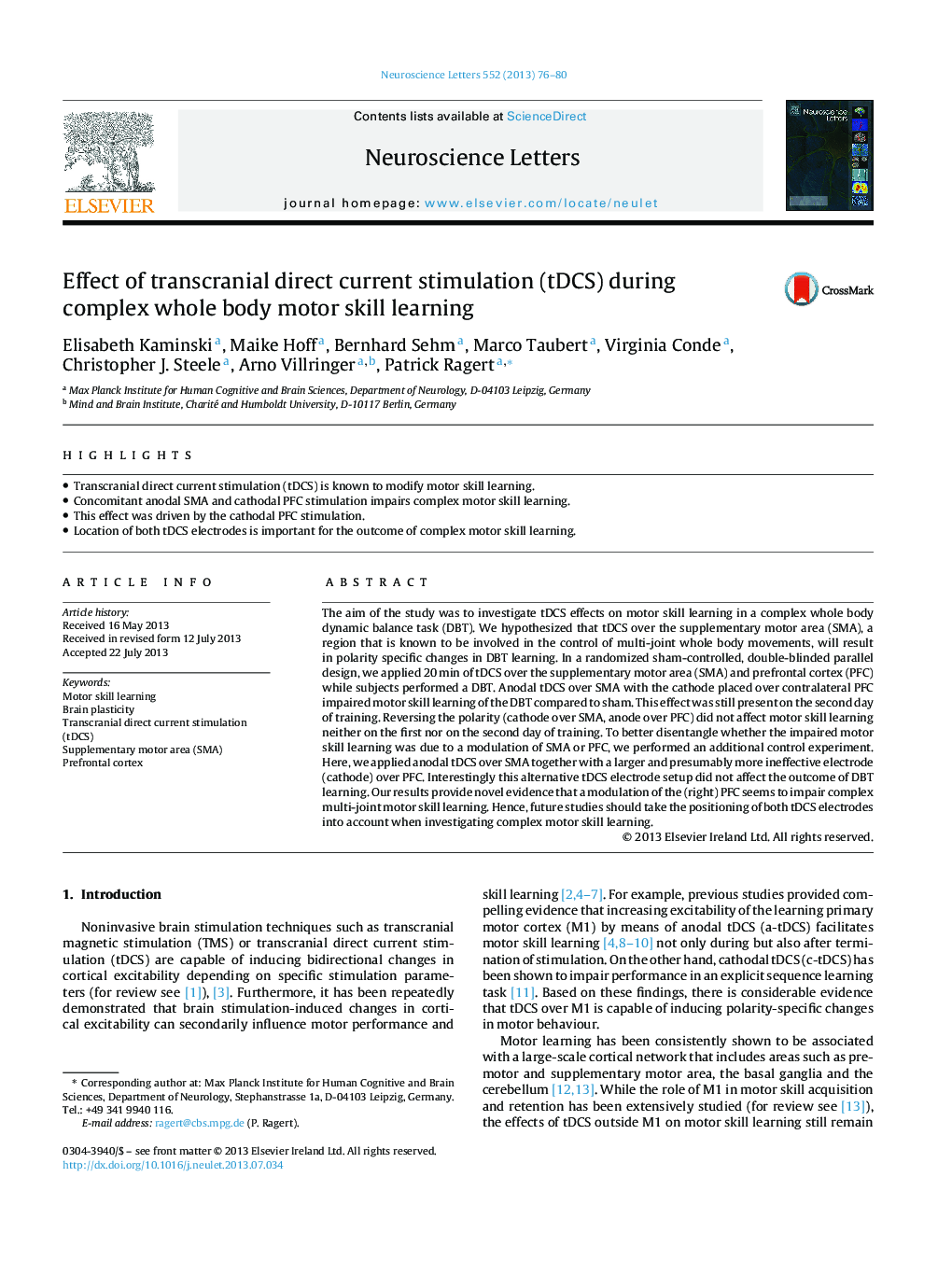| Article ID | Journal | Published Year | Pages | File Type |
|---|---|---|---|---|
| 6282794 | Neuroscience Letters | 2013 | 5 Pages |
Abstract
The aim of the study was to investigate tDCS effects on motor skill learning in a complex whole body dynamic balance task (DBT). We hypothesized that tDCS over the supplementary motor area (SMA), a region that is known to be involved in the control of multi-joint whole body movements, will result in polarity specific changes in DBT learning. In a randomized sham-controlled, double-blinded parallel design, we applied 20Â min of tDCS over the supplementary motor area (SMA) and prefrontal cortex (PFC) while subjects performed a DBT. Anodal tDCS over SMA with the cathode placed over contralateral PFC impaired motor skill learning of the DBT compared to sham. This effect was still present on the second day of training. Reversing the polarity (cathode over SMA, anode over PFC) did not affect motor skill learning neither on the first nor on the second day of training. To better disentangle whether the impaired motor skill learning was due to a modulation of SMA or PFC, we performed an additional control experiment. Here, we applied anodal tDCS over SMA together with a larger and presumably more ineffective electrode (cathode) over PFC. Interestingly this alternative tDCS electrode setup did not affect the outcome of DBT learning. Our results provide novel evidence that a modulation of the (right) PFC seems to impair complex multi-joint motor skill learning. Hence, future studies should take the positioning of both tDCS electrodes into account when investigating complex motor skill learning.
Keywords
Related Topics
Life Sciences
Neuroscience
Neuroscience (General)
Authors
Elisabeth Kaminski, Maike Hoff, Bernhard Sehm, Marco Taubert, Virginia Conde, Christopher J. Steele, Arno Villringer, Patrick Ragert,
